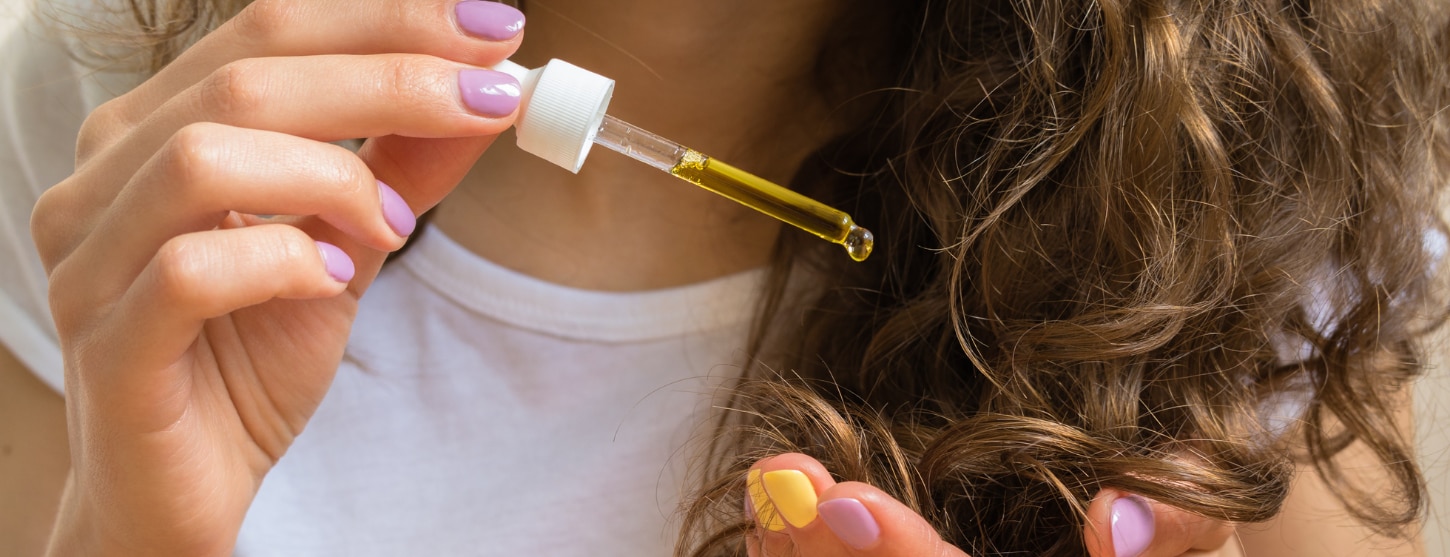15% off €25
Code:BASKET
Your guide to cystic acne

What causes cystic acne? Our Holland & Barrett nutritionist shares some dietary ideas that could help you understand why your skin is acting out.
Summary
1Putting cystic acne on-the-spot
There are many triggers (from hormones to genetics) but what causes cystic acne is usually the same as any other spot.
2What is cystic acne?
Cysts are a more acute type of acne (cystic acne) that, like nodules, develop deeper beneath the skin.
3How your diet affects acne
Nutritionist, Emily Rollason, suggests taking a closer look at your diet as an additional way for you to care for your acne-prone skin.
We share some diet ideas that could help you understand why your skin is acting out. Whilst blackheads and whiteheads are certainly unwelcome, cystic acne causes bigger spots that are harder to conceal. But it's not just their size that makes these bloated blemishes so troublesome. They're also downright painful. Then, there's the infuriating reality that these swollen, sore spots rarely come to a head.
All in all, you're forgiven for feeling powerless in your fight against them. Severe acne, such as cystic acne, is usually controlled with medication. However, diet can also play a role in preventing the formation of spots.
Putting cystic acne on-the-spot
First, let’s take a moment to understand what makes this type of breakout different. There are many triggers (from hormones to genetics) but what causes cystic acne is usually the same as any other spot.
A pore or hair follicle gets congested with an oily substance called sebum. This causes irritation and inflammation, resulting in a spot forming on the surface. But not all blemishes look the same. Let's take a closer look at five common types of spot to answer this big question...
What is cystic acne?
1. Blackheads
These tiny darks spots tend to cluster on the chin, nose and forehead, but can sometimes appear on the chest and back. Blackheads are annoying but are considered a mild form of acne.
2. Whiteheads
If your clogged up follicle happens to be close to the surface of your skin, it's more likely to swell outwards. This is when a whitehead pops up.
3. Pustules
Another pus-filled variety of blemish, but bigger and more inflamed than your average whitehead. Be warned, they can be painful.
4. Nodules
These spots develop further under the skin and are a more severe form of acne. They aren’t pus-filled and appear as hard lumps on the skin’s surface.
5. Cysts
Cysts are a more acute type of acne (cystic acne) that, like nodules, develop deeper beneath the skin. These large, inflamed bumps are pus-filled and usually painful.
How your diet affects acne
Holland & Barrett nutritionist, Emily Rollason, suggests taking a closer look at your diet as an additional way for you to care for your acne-prone skin. In particular, Emily points to four complexion-friendly foods that may help you to maintain a clearer complexion.
Fruit and vegetables
A diet that’s rich in fruit and vegetables adds a variety of different nutrients into your diet. This includes vitamins A and C, as well as being a good source of dietary fibre. Vitamins A and C are both key nutrients for the maintenance of normal skin.
Zinc rich foods
Zinc is essential for the maintenance of normal skin. Lean red meat, seafood, legumes, nuts and seeds are natural food sources thought to aid with reducing production of certain pro-inflammatory substances.
Vitamin E
Nuts and seeds, vegetable oils, vegetable oil spreads and avocados are all sources of this important skin nutrient. Whilst there’s no current evidence to suggest consuming more vitamin E will aid with acne, there’s some evidence to show low vitamin E levels may contribute to acne. Due to its strong antioxidant properties, vitamin E may also help to protect the skin against free radical damage.
Essential fats
Look for foods containing essential fats. In particular, those containing Omega-3 fatty acids. For example, walnuts, flaxseeds, chia seeds and oily fish such as salmon, mackerel, herring and pilchards. They have anti-inflammatory properties and may also help contribute to normal sebum levels.
What about acne-inducing foods to avoid?
Could something you eat be triggering breakouts? There are lots of links between food and acne. As a result, it's tempting to be ruthless and cut them out based on what you’ve read. But it's not necessarily that simple.
While dairy may be an acne trigger for some people, for others, their skin may react more to foods with a high glycaemic load. In short, we’re all different. Whether a food type stimulates skin irritation varies vastly from person to person.
Get journaling
Hit pause. Let's reflect before stocking up on dairy-free alternatives and slashing refined foods and sugar from your diet.
Emily suggests keeping a food diary. By noting what you eat and the occurrence of breakouts, you may be able to identify patterns. With this knowledge you can then speak to a healthcare professional about avoiding food types for a short period of time and tracking any improvements.
Don’t squeeze it
And finally, if you take one thing from this post, let it be this. However tempting it is, resist squeezing cystic spots.
These pimples offer none of the satisfaction of a whitehead and just cannot be popped. But not only will trying to pop them be disappointing, it also makes them worse.
Last updated: 3 April 2020
Emily Rollason is a qualified Nutritional Therapist, achieving a Diploma from the Institute for Optimum Nutrition. Working with Holland & Barrett for six years, Emily has valuable experience working on a one-to-one basis with clients with a variety of health concerns such as endometriosis, adenomyosis and aiding those looking to support certain dietary requirements, such as a vegan or vegetarian diet. Emily has a long history of working with customers to guide them on what products are best suited to help them with their ailments. Her particular interests in nutrition and wellness focus around digestive health, female health and allergies/intolerances.



